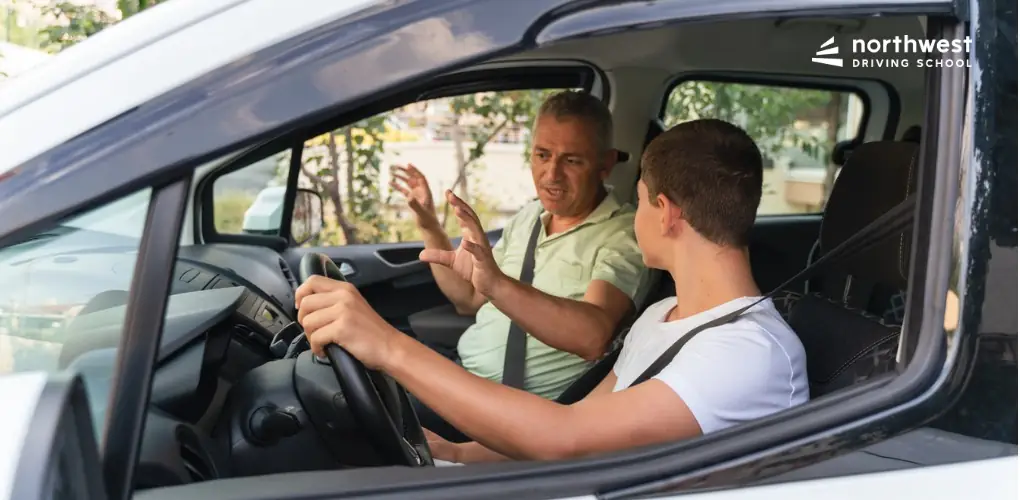- Driving School
What are the Top Five Skills Taught in a Defensive Driving Class?

Defensive driving goes beyond just techniques used while driving. It is primarily a mindset centered on safety, awareness, and responsibility. Whether you are a new driver or an experienced professional driver, defensive driving courses can significantly improve your driving skills and help you navigate roads more safely. Here are the top five skills taught in defensive driving courses and why they benefit every driver.
Table of Contents
Situational Awareness
Situational awareness is the foundation of defensive driving. It means maintaining an awareness of your surroundings, considering other vehicles, pedestrians, and road conditions, as well as possible hazards.
Constant Scanning: Learning to continuously overview the road ahead, behind, and to your sides is the foremost part of a defensive driving course. Once you know how to do this effectively, you will be more prepared to recognize dangers earlier.
Blind-Spot Monitoring: One should regularly check with the blind spots while moving through lanes or merging in.
Identifying Hazards: Being capable of perceiving hazards like refuse or potholes and knowing what action to take at the appropriate time is very critical. Defensive driving will let you train yourself on how to look out for and properly avoid these dangers.
Keeping a Safe Following Distance
A safe distance from the vehicle in front of you can ensure that you can stop without hitting it. Defensive driving classes emphasize leaving enough space to react if traffic comes to a sudden stop or slows down.
Three-Second Rule: This section teaches the basic rule of keeping at least a three-second gap ahead, which buys time to stop if the vehicle in front suddenly breaks.
Adjusting for Conditions: Courses emphasize that the following distances should be increased by a few car lengths in inclement weather to account for reduced visibility and the longer stopping distances that result.
Prevent Tailgating: Tailgating is a frequent cause of accidents. Defensive driving courses emphasize avoiding this action and add that one allows space or room, better known as a safety buffer zone.
Proper Application of Signals and Communication
It’s imperative to communicate well with other road users to avoid confusion and accidents. Safe driving courses stress the effective use of signals and other communication aids.
Signaling Intentions: It is fundamental but critical to signal your intentions well in advance. This helps other drivers gauge your actions and respond appropriately.
Eye Contact and Gestures: The driver’s eye contact with other drivers, or even appropriate hand gestures in conditions of yielding or merging, will assist in clarifying the intention of a particular action to avoid misunderstanding.
Reading Others’ Cues: Equally important is the ability to read and respond appropriately to the signals and behavior of other motorists. Defensive driving teaches you how to read those cues effectively.
Read More: Defensive Driving Courses: What’s Included?
Speed Management
Another essential skill to acquire is the appropriate speed, which should be manageable according to the road and surrounding conditions. Defensive driving courses provide strategies for maintaining safe and legal speeds.
Maintaining Speed Limits is one of the essential fundamentals. The courses emphasize not driving at more than the displayed speed limits, most notably in high-pedestrian areas and construction zones.
Speed Adjustment According to Conditions: The principles of defensive driving teach you how to adjust your speed according to road conditions, traffic, and weather at the time. Driving at a speed higher than the conditions warrant is one of the most prevalent causes of accidents.
Smooth Acceleration and Braking: Learn to accelerate and brake smoothly to keep the vehicle under control. This reduces the tendency of a car to skid or lose control, particularly in poor conditions.
Handling Emergencies
Knowing what to do in an emergency can save your life. Defensive driving courses teach you how to react correctly in many emergencies.
Skid Control: Knowing how to regain control makes all the difference if the vehicle starts to skid. Courses teach techniques for both front-wheel and rear-wheel skids.
Emergency Stops: Practicing safe and effective emergency stops is the concept of defensive driving.
Avoidance Maneuvers: Practice safe performance of emergency avoidance maneuvers like swerving to avoid a collision.
Conclusion
Defensive driving courses emphasize situational awareness, observing safe distances, proper use of signals, speed management, and handling emergencies. These car driving classes help prevent accidents and promote driver responsibility. Whether you are a beginner or an experienced driver, investing in defensive driving training will significantly enhance your driving skills and safety.
If you’re looking for driving lessons in Las Vegas, consider contacting Northwest Driving School for their comprehensive programs. With a reputation for excellence, Northwest Driving School offers Las Vegas the best driving lessons, ensuring you receive top-notch instruction and support.




